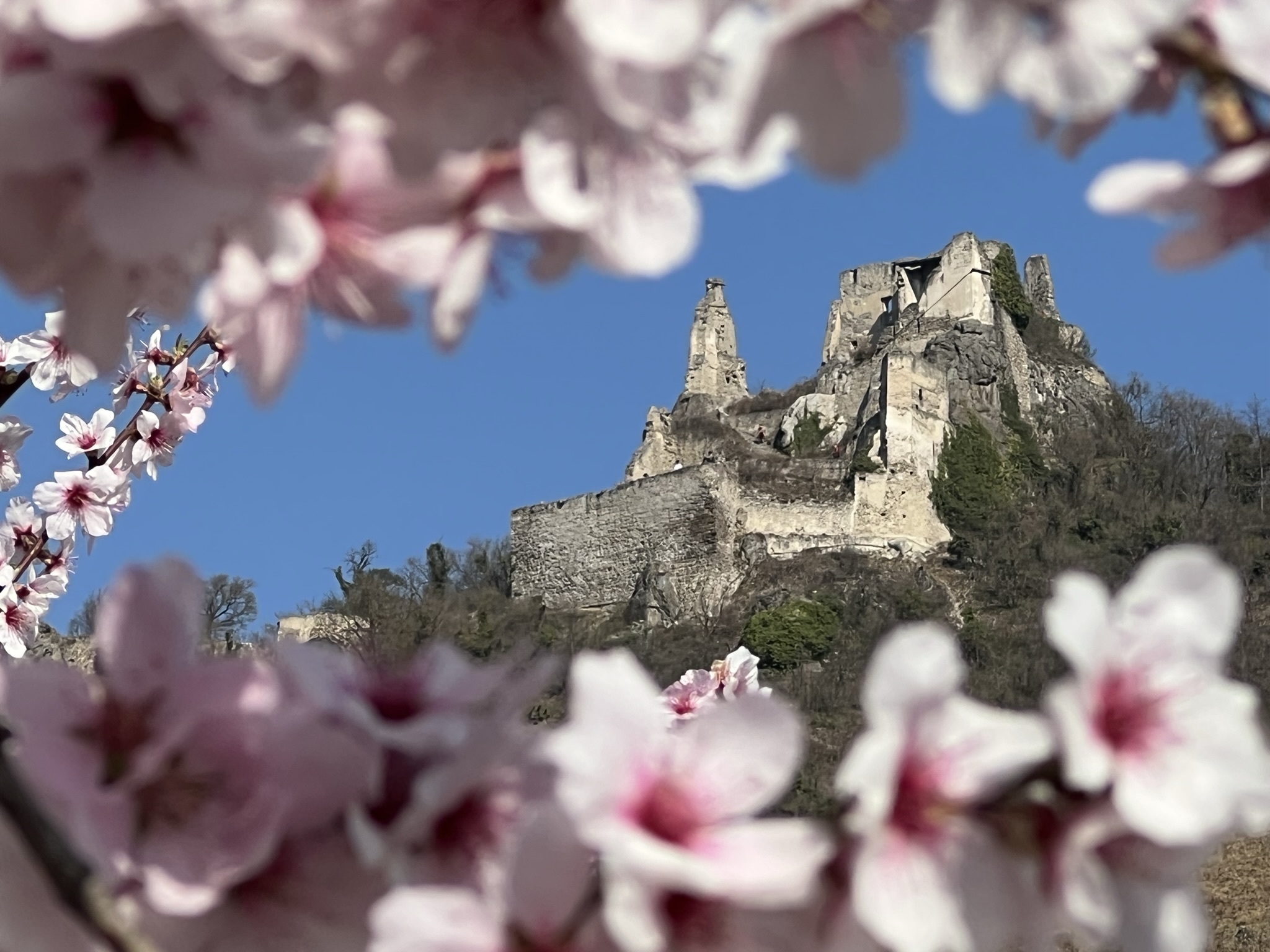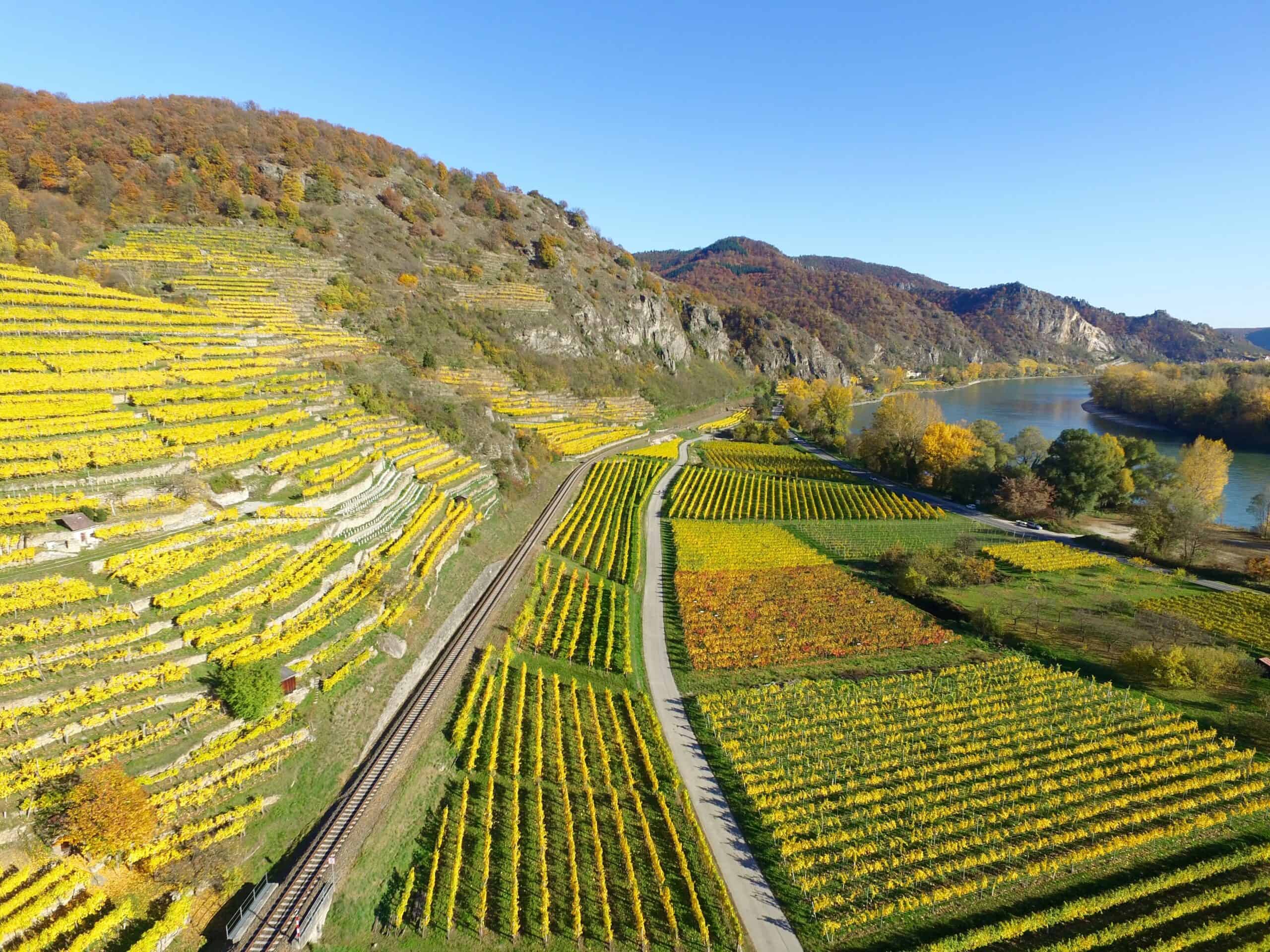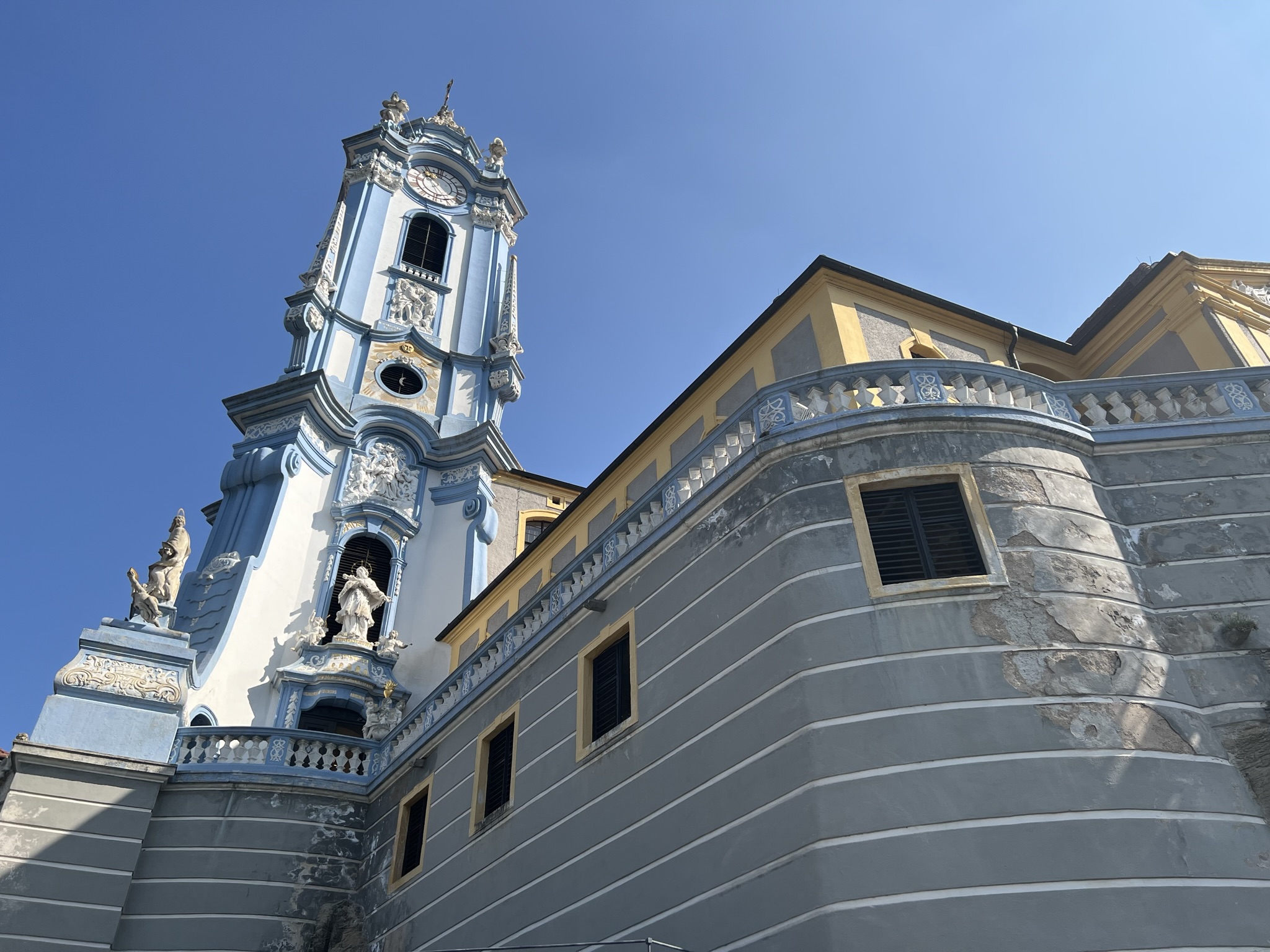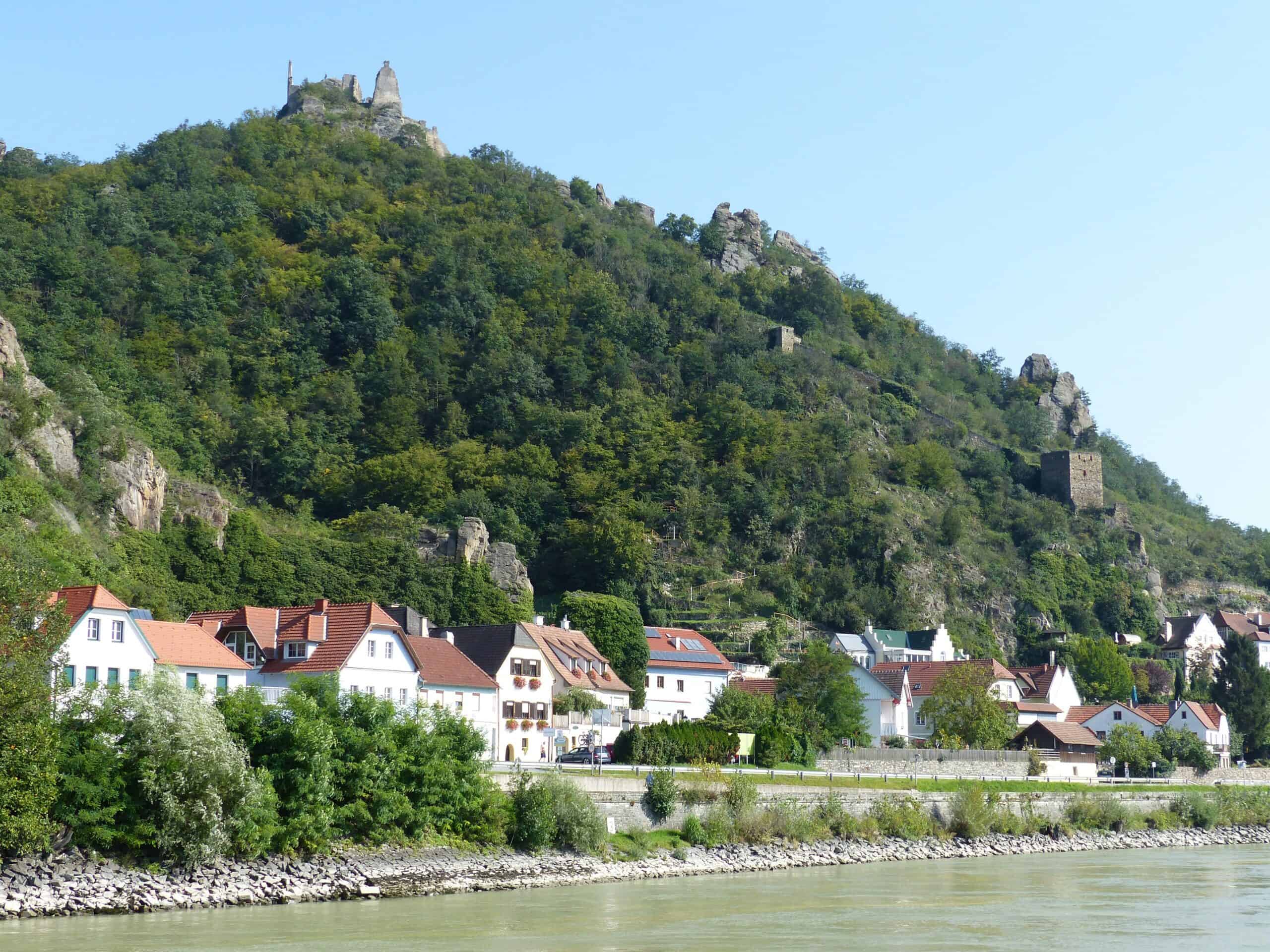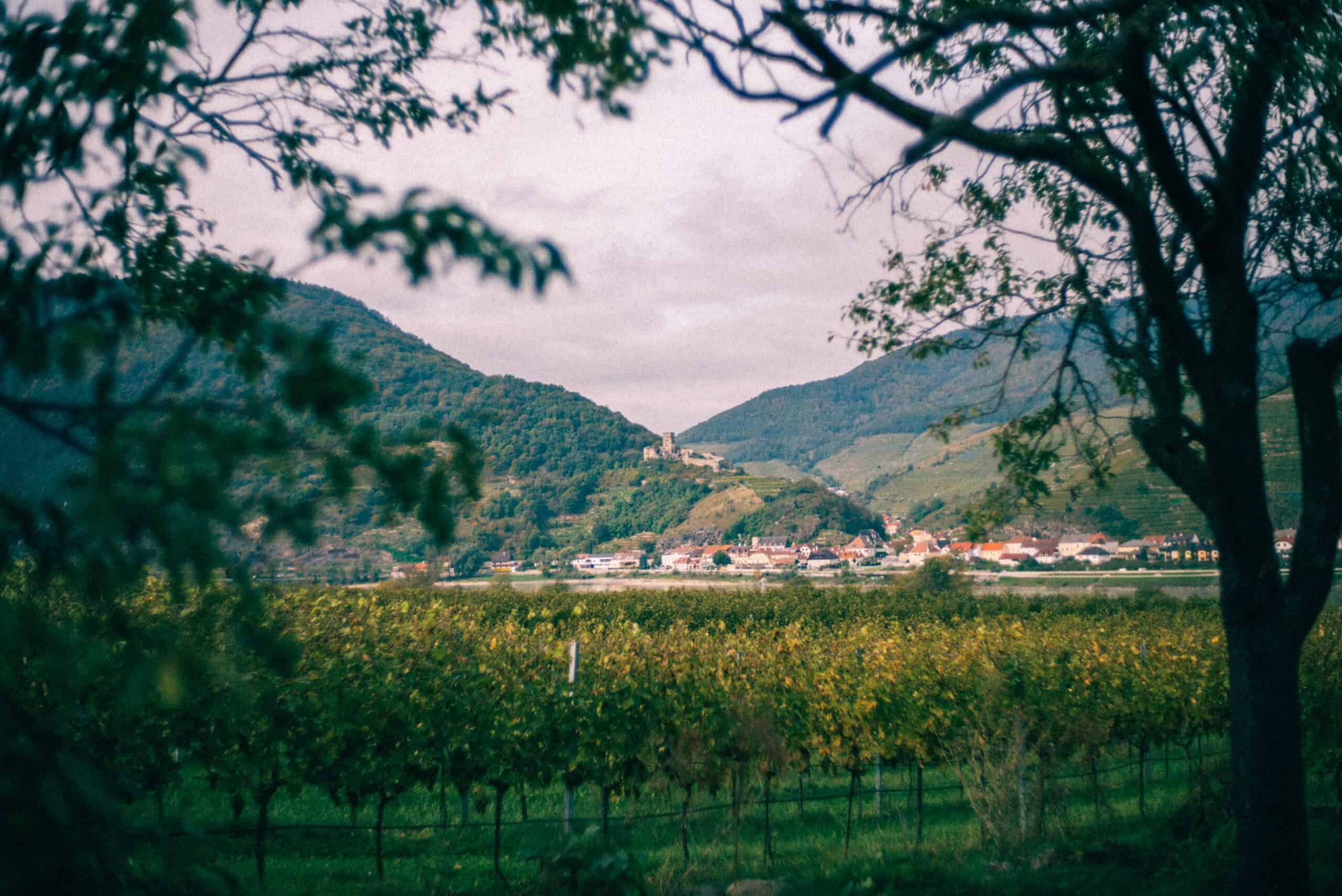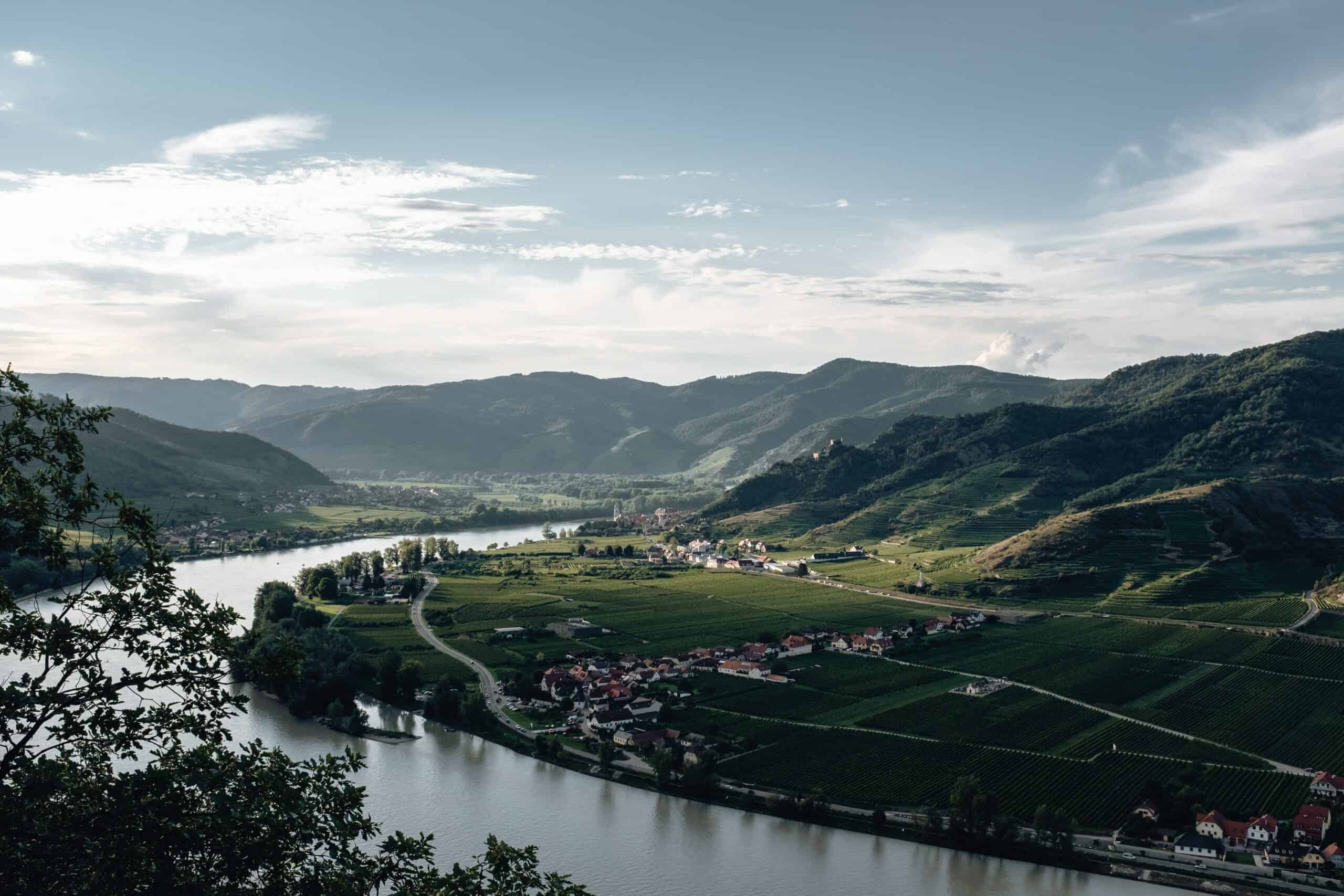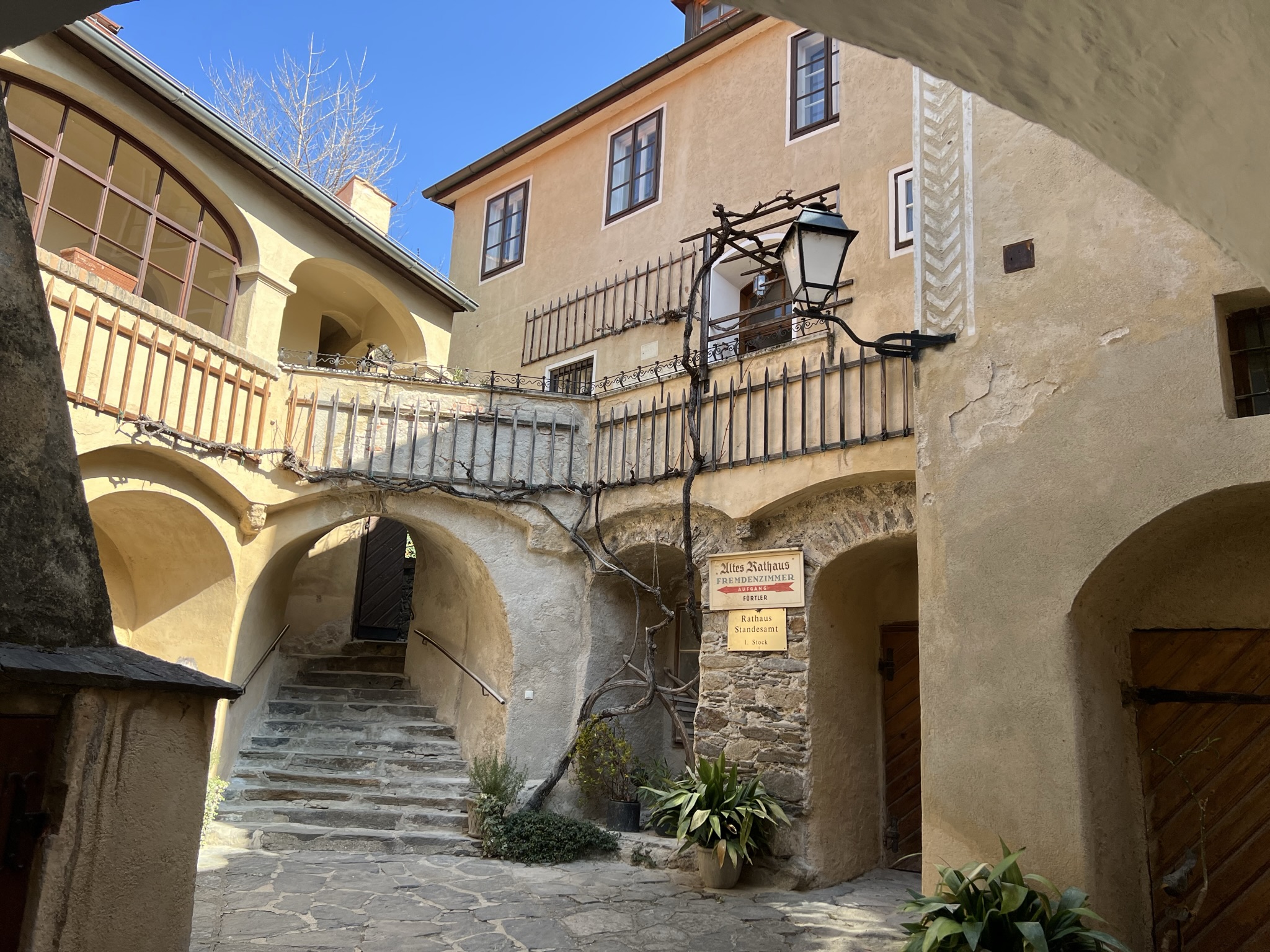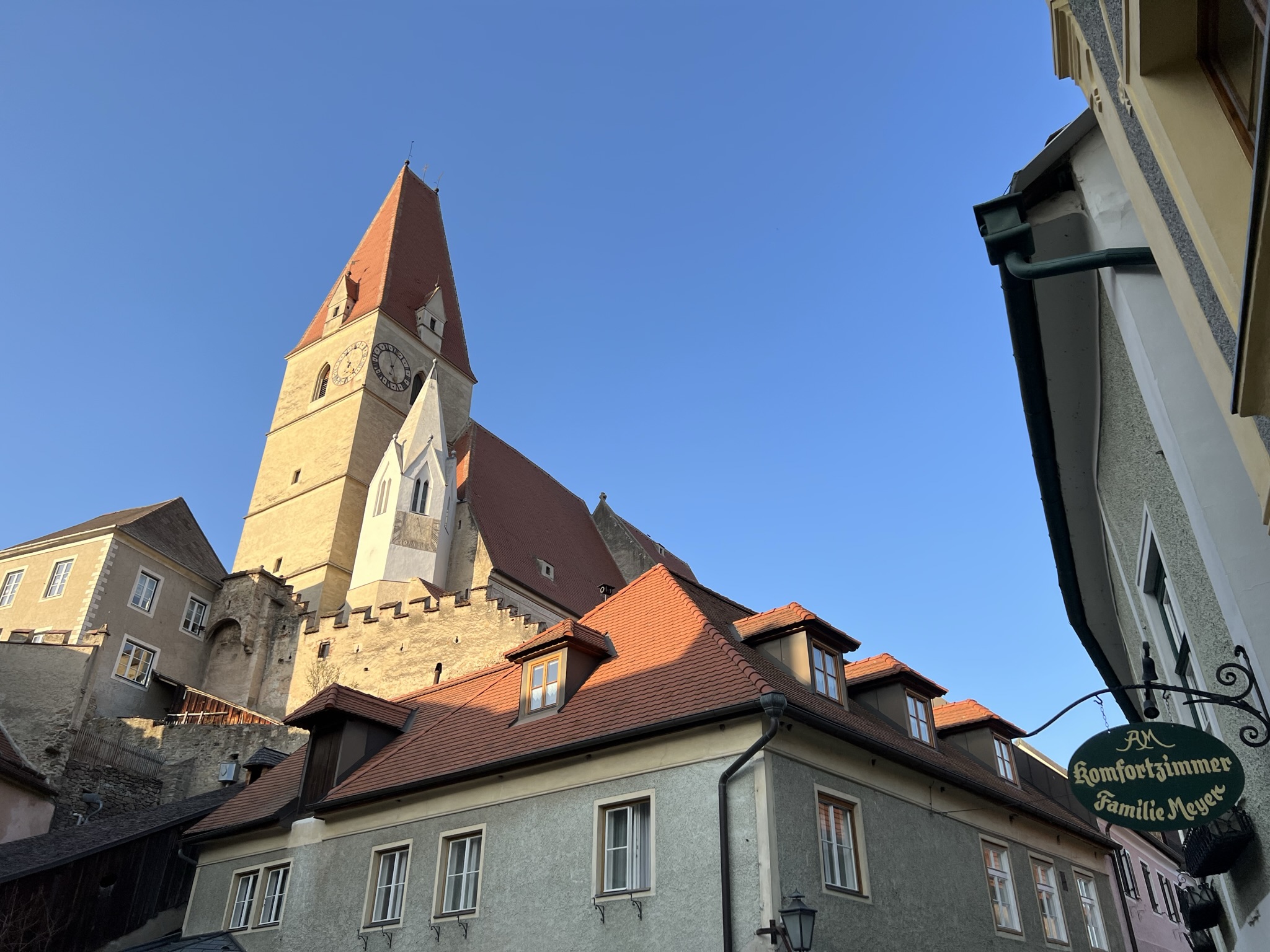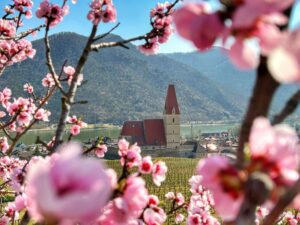The Wachau is the landscape in and around the Danube valley between Melk and Krems an der Donau in Lower Austria, around 80 kilometres west of the federal capital Vienna. In 2000 it was declared a Cultural landscape Wachau (english Wachau Cultural Landscape) with the Stifts Melk and Göttweig as well as the old town of Krems on the UNESCO World Cultural and Natural Heritage List.
Top excursion destinations in the Wachau
The most important excursion destinations in the Wachau include above all:
- Dürnstein - with the famous blue church
- Pointed
- Krems on the Danube
- Göttweig Benedictine Abbey
- Melk Abbey
- Winegrowers' association and wine experience world Sandgrube 13
- Danube shipping Brandner
World Heritage Trail and Danube Cycle Path
Two well-known paths lead through the Wachau.
- The Danube Cycle Path is a long-distance cycle route that runs from the source of the Danube to where it flows into the Black Sea. A very popular section of the route is the section through the Wachau.
- With a distance of 180 kilometres, the Wachau World Heritage Trail is considered a long-distance hiking trail. This trail connects the 13 communities of the Wachau UNESCO World Heritage Site and leads through a landscape rich in views. The start and end point is Krems an der Donau.
Experience history up close: castle and ruin tours in the Wachau region
In addition to the two neighbouring historic urban regions of Melk and Krems with their abbeys, castle ruins are also important tourist destinations:
- The Aggstein ruinswas modernised in 2005 during its largest renovation since 1620. In addition to modern mediation methods (audio tours), it now also offers the opportunity for weddings in the re-consecrated castle chapel.
- Without paying a high entrance fee, you can visit the Ruin rear buildingin Spitz and the Dürnstein ruins
- You can also visit the Oberranna Castlein Mühldorf.
- Not open to the public are the Dürnstein Castlewhich Castle Nieder Rannain Mühldorf and Schönbühel Castle in Schönbühel-Aggsbach.
Viewpoints
The first towers or control centres were erected on prominent mountain peaks or vantage points as early as the first half of the 19th century. However, most lookouts were opened at the end of the 19th century. But lookout towers are still being built today (e.g. Gruberwarte, Seekopfwarte).
- Dachberg control centre near Emmersdorf an der Donau
- Jauerling lookout point near Maria Laach am Jauerling
- Gruberwarte near Weißenkirchen in the Wachau
- Weiglwarte near Dürnstein
- Seekopf tower near Rossatz-Arnsdorf
- Starhembergwarte in Dürnstein
- Ferdinandswarte in Bergern in the Dunkelsteinerwald
- Danube Observatory in Krems on the Danube
Social events in the Wachau
- Wachau Wine Spring- widespread, wine tasting of the Vinea Wachau member companies on the first weekend in May
- Apricot festival
- Apricot blossom
- Riesling Festival
- Fireworks for the summer solstice
- Grape harvest
- Wine autumn
- Wine baptism
- Wachau Marathon
are strong crowd pullers
Cultural events
- Wake-up festival in Weissenkirchen: Theatre performances at the Teisenhoferhof
- Melk Summer Games
Tourist shipping
The Wachau is one of the busiest sections of the Danube in terms of tourist shipping (see DDSG Blue Danube and Brandner Schiffahrt). Smaller ships offer individual trips for events, meetings, family celebrations, especially civil weddings on board or the "Weinriedenfahrt" of Nostalgie-Tours Wachau.

